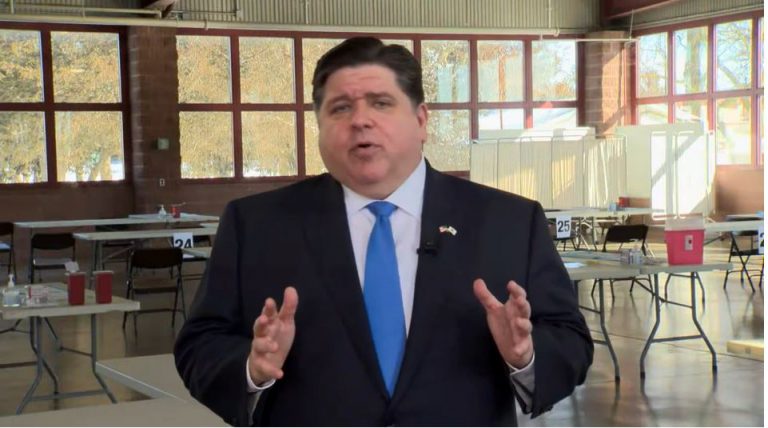SPRINGFIELD – Illinois Gov. J.B. Pritzker outlined a proposed budget for the next fiscal year this week that keeps state spending on both K-12 and higher education mostly flat. If approved by state lawmakers, this would be the second year in a row that Illinois hasn’t invested in its school funding formula.
The formula, passed in 2017, is designed to increase financial equity by sending state dollars to Illinois’ poorest school districts. But the formula only works if elected officials continue to invest money in it.
With a projected budget about $3 billion, Pritzker proposed a $41.7 billion budget — which spends $1.8 billion less than the previous year’s budget — that doesn’t raise taxes and instead relies on closing tax loopholes and implementing hiring freezes in state government.
Pritzker’s budget keeps state funding for K-12 schools level at about $8.9 billion— the same as last year’s budget. State funding for early childhood and higher education is also relatively flat — with an additional $28 million going to the state’s Monetary Award Program to fund scholarships for low-income college students.
In his combined State of the State and budget address on Wednesday, Pritzker said federal COVID-19 emergency relief funds — totaling about $2.8 billion — will provide a needed revenue boost to the state’s K-12 schools.
“Thanks to this funding, we can protect our K-12 investments at current spending levels. No schools will have to reduce spending, and they can instead focus on meeting the needs of students who have tried to learn in a chaotic and trying time,” Pritzker said.
Robin Steans, president of Advance Illinois, a nonprofit that advocates for increased spending on public education, says the governor faces a tough situation. But she says more state investment is needed to ensure all Illinois students have access to a quality education.
“We are coming into this pandemic with more than half of our districts under 70% funded. So they are thousands and thousands of dollars per pupil under what they need in order to serve kids well,” Steans says.
She says federal COVID-19 relief money is important, but it’s a one-time revenue boost. State investments, on the other hand, allow districts to make long-term changes, including hiring more teachers, social workers and counselors, and adding programming like art and music classes.
“What you really need is both,” Steans says. “Both the federal funds to be allowed to do what they need to do for the short-term issues and recovery challenges, and state funds that allow districts to make longer-term structural changes to benefit their students.”
Steans says she hopes lawmakers get creative in the budget process and find a way for the state to make more progress on financial equity by investing more dollars into its school funding formula. But she sympathizes with the difficult decisions facing elected officials given the state’s preexisting fiscal challenges and the fallout of the COVID-19 pandemic.
“I am glad I am not an elected leader right now. These are impossibly difficult decisions and the need is real,” Steans says. “And we have to keep pushing for it. We need to make progress. Our kids need it. They depend on it and depend on us all.”
Lee Gaines is a reporter at Illinois Public Media. Follow Lee Gaines on Twitter: @LeeVGaines

